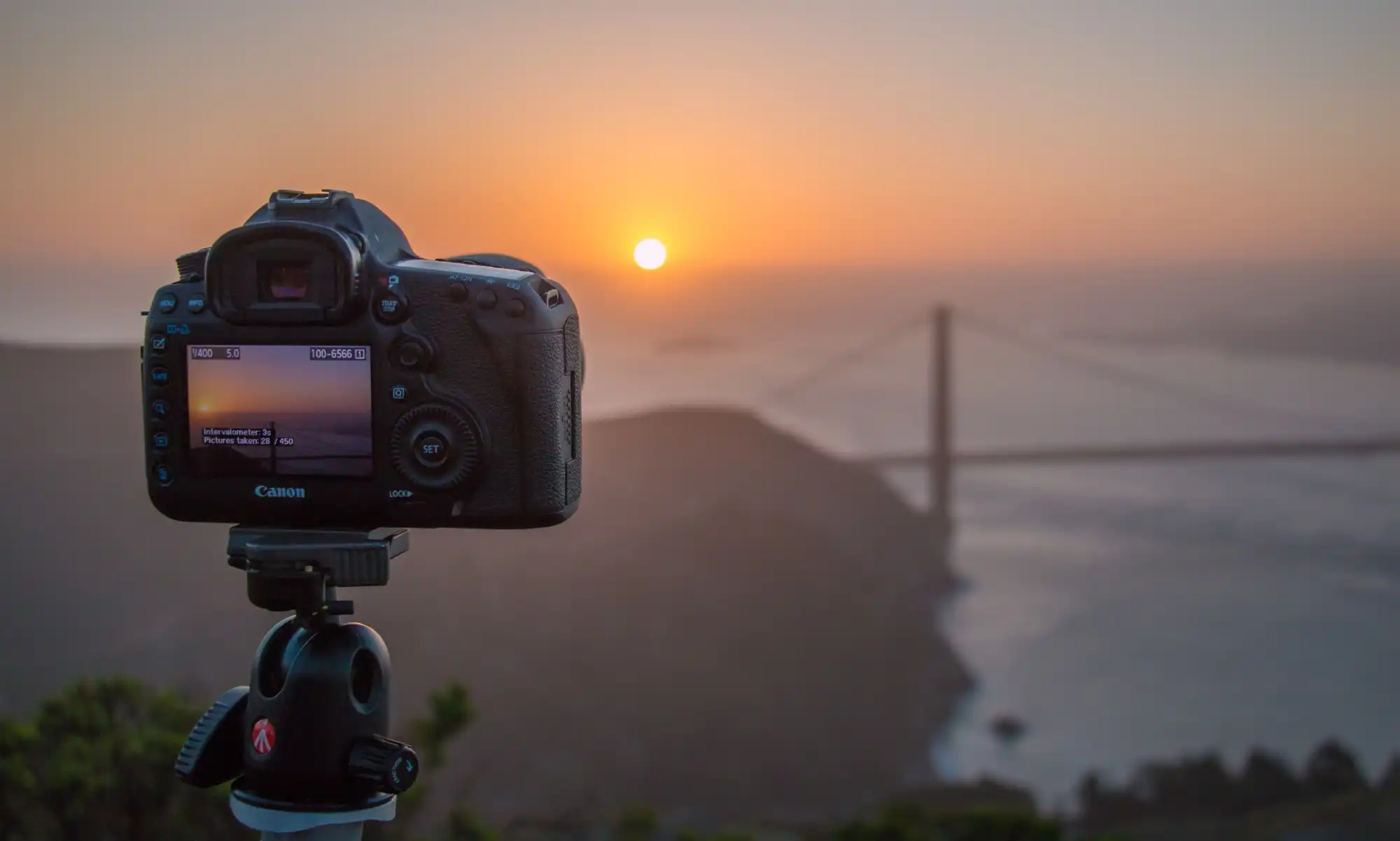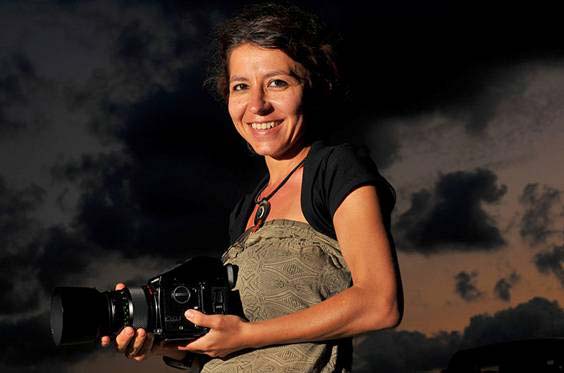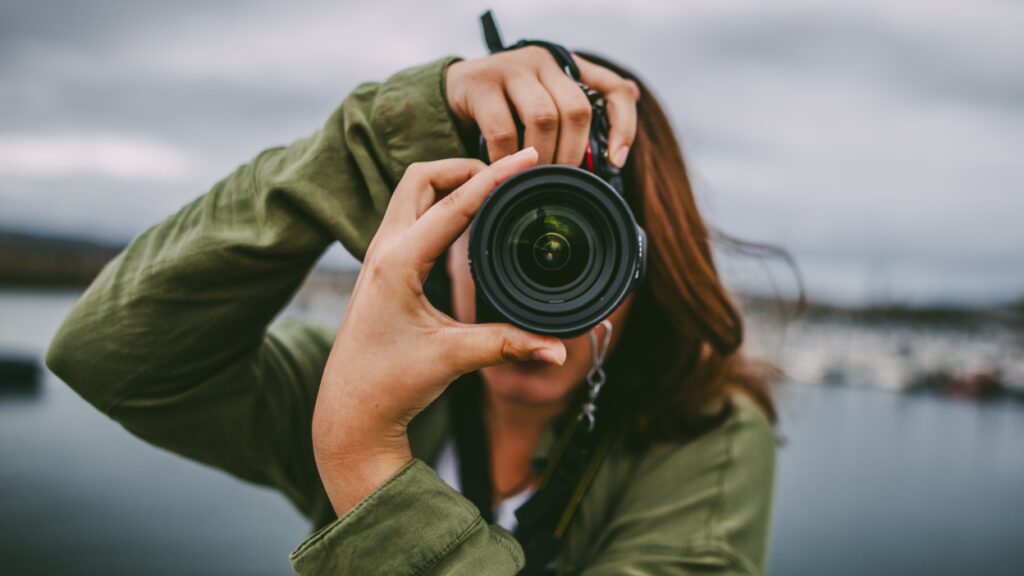Introduction
Welcome to the exciting world of photography and the opportunity to become a Getty Images photographer. Getty Images is one of the most renowned and prestigious platforms for photographers, offering the chance to showcase your work to a global audience. In this blog post, we will guide you through the steps to kickstart your journey as a Getty Images photographer.
Also Read This: Identity Shift: Change Username on DeviantArt
1. Understanding Getty Images

Before you embark on your journey to become a photographer for Getty Images, it's essential to have a clear understanding of what this platform is all about and why it's a highly sought-after destination for photographers worldwide.
1.1 What is Getty Images?
Getty Images is a leading global provider of high-quality visual content, including images and videos. It serves a diverse range of clients, including media companies, advertisers, and creative professionals who seek top-tier visual assets for their projects. Getty Images boasts an extensive library of millions of creative and editorial images, offering an exceptional opportunity for photographers to showcase their work to a vast and diverse audience.
1.2 Why Work with Getty Images?
Working with Getty Images offers several compelling benefits for photographers:
- Global Exposure: Getty Images has a worldwide presence, ensuring that your work can reach an international audience.
- High Reputation: The Getty Images brand is synonymous with quality and excellence in the field of visual content.
- Earning Potential: As a Getty Images contributor, you have the opportunity to earn royalties from the licensing of your images.
- Industry Insights: Getty Images provides valuable insights and trends in the photography industry, helping you stay up to date and improve your skills.
1.3 The Getty Images Community
Getty Images fosters a vibrant community of photographers, videographers, and creative professionals. When you join Getty Images as a contributor, you become a part of this community, which offers opportunities for networking, collaboration, and learning. It's a place where you can connect with fellow photographers and gain insights from experienced professionals.
Now that you have a better understanding of what Getty Images is and the advantages it offers, let's dive into the process of becoming a photographer for this renowned platform.
Also Read This: From Data to Impact: Maximizing SlideShare’s Potential for Influence
2. Getting Started as a Getty Images Photographer

Congratulations on deciding to take the first step towards becoming a Getty Images photographer. To embark on this exciting journey, you need to follow a structured process that includes understanding the requirements, preparing your portfolio, and applying to Getty Images. Let's break down the steps:
2.1 Requirements and Eligibility
Getty Images maintains certain standards for its photographers. Here are the key requirements and eligibility criteria:
- Photography Skills: To be considered, you must possess strong photography skills and the ability to capture high-quality images.
- Legal Requirements: You must be at least 18 years old and have the legal capacity to enter into an agreement.
- Image Quality: Your portfolio should demonstrate the technical and creative quality expected by Getty Images.
- Originality: Ensure your work is original and does not infringe on any copyrights or trademarks.
It's crucial to review Getty Images' specific eligibility and quality guidelines on their official website to ensure you meet their standards before proceeding.
2.2 Preparing Your Photography Portfolio
Your photography portfolio is your calling card, showcasing your skills, creativity, and style. Here's how to prepare a portfolio that stands out:
- Diversity of Subjects: Include a variety of subjects and styles to demonstrate your versatility as a photographer.
- High-Quality Images: Ensure your portfolio consists of high-resolution, sharp, and well-composed photographs.
- Image Descriptions: Provide informative and accurate descriptions for each image, highlighting the subject and any relevant details.
- Model and Property Releases: If your portfolio contains images of recognizable people or private property, ensure you have the necessary model and property releases to avoid legal issues.
Remember, your portfolio is a representation of your work, so make it the best it can be.
2.3 Applying to Getty Images
Once you have a strong portfolio that meets Getty Images' standards, it's time to apply. Here are the general steps:
- Visit the Getty Images contributor application page on their website.
- Create an account or log in if you already have one.
- Fill out the application form, providing accurate and detailed information about yourself and your portfolio.
- Submit your application and await a response from Getty Images.
The review process may take some time, as Getty Images evaluates each application carefully. If your application is successful, you'll be notified and can start uploading your images to become a Getty Images contributor.
Getting started as a Getty Images photographer is an exciting journey, and the quality of your work and adherence to their guidelines are key to your success. Now that you're well-prepared, take the next steps and start your path to becoming a Getty Images contributor.
Also Read This: How to Create a Successful Influencer Marketing Campaign
3. Portfolio Development
Your photography portfolio is the key to success as a Getty Images photographer. It's your showcase, your brand, and the primary means through which you'll attract clients and customers. In this section, we'll delve into the essential aspects of portfolio development:
3.1 Building a Strong Portfolio
Creating a compelling portfolio involves more than just showcasing your best photos. It's about curating a collection that tells a story and demonstrates your unique style. Here's how to build a strong portfolio:
- Consistency: Ensure a consistent style and theme throughout your portfolio. This helps in creating a cohesive and memorable brand.
- Showcase Your Best Work: Quality over quantity. Select your top images that highlight your skills and creativity.
- Diversity: Include a variety of subjects, genres, and styles to showcase your versatility as a photographer.
- Place your strongest images at the beginning and end of your portfolio to make a lasting impression.
3.2 Legal Considerations for Your Photos
When building your portfolio, it's crucial to consider the legal aspects, particularly regarding image rights and model releases. Ensure that your portfolio complies with legal standards to avoid any future complications:
| Legal Element | Explanation |
|---|---|
| Copyright | Ensure that you own the copyright to your images or have obtained the necessary rights to use them. |
| Model Releases | If your portfolio includes recognizable people, obtain model releases to grant permission for their likeness to be used commercially. |
| Property Releases | For images featuring private property, ensure you have obtained the required property releases. |
Adhering to these legal considerations not only protects you but also ensures the ethical use of your work on platforms like Getty Images.
Building an outstanding portfolio is an ongoing process. Regularly update and refine it with your latest work to keep it fresh and appealing. A strong and legally compliant portfolio will significantly enhance your chances of success as a Getty Images photographer.
Also Read This: Watermark Woes: Removing the Adobe Stock Watermark Made Easy
4. Technical Guidelines
Meeting technical guidelines is paramount when submitting your images to Getty Images. These guidelines ensure that your photos are of the highest quality and can be used effectively by clients. Here's a detailed look at the technical aspects you need to consider:
4.1 Image Quality and Resolution
Getty Images requires images of exceptional quality. This involves more than just a stunning composition; it's about technical excellence:
- Resolution: Images should have a minimum resolution of 300 DPI (dots per inch) to ensure they can be used for print and digital applications.
- Focus and Sharpness: Images must be sharp and well-focused. Avoid any blurriness or softness that could compromise image quality.
- No Compression Artefacts: Ensure there are no visible compression artifacts, which can degrade image quality.
- Color Accuracy: Colors should be accurate and natural, with no oversaturation or color casts unless it's intentional for creative reasons.
4.2 Image Keywords and Descriptions
Properly labeling and describing your images is crucial for their discoverability. Getty Images relies on keywords and descriptions to match your photos with clients' needs:
- Relevance: Use relevant keywords that accurately describe the content of your image.
- Avoid Overloading: Don't use excessive keywords or misleading terms; this can lead to your image being rejected.
- Provide Descriptions: Include descriptive and informative captions that provide context for your images.
- Language: Use appropriate language and avoid using copyrighted names or trademarks in your descriptions and keywords.
4.3 Image Format and File Size
The format and file size of your images also matter. Here's what you should keep in mind:
| Element | Requirements |
|---|---|
| File Format | Save your images in JPEG format. This is the preferred format for Getty Images. |
| File Size | Images should be at least 3 megapixels but not exceed 100 megapixels in size. |
| Compression | Avoid heavy compression. Getty Images prefers images with minimal compression to maintain quality. |
Adhering to these technical guidelines ensures that your images are ready for submission and are more likely to be accepted by Getty Images. It's essential to maintain the highest quality throughout the process, from capturing the image to submitting it to the platform.
Also Read This: 10 Best Practices for Writing Effective Facebook Posts
5. Copyright and Licensing
Understanding copyright and licensing is fundamental for photographers who contribute their work to Getty Images. This section covers the key concepts related to copyright and the licensing process:
5.1 Understanding Copyright
Copyright is a legal concept that grants the creator of an original work exclusive rights to its use and distribution. As a photographer, you automatically own the copyright to your images as soon as you capture them. Here's what you need to know:
- Exclusive Rights: Copyright gives you exclusive control over how your images are used, reproduced, and distributed.
- Duration: In most countries, copyright protection lasts for the creator's lifetime plus 70 years. After this period, the work enters the public domain.
- Usage Rights: You can grant specific usage rights to others while retaining overall copyright. This is often done through licensing agreements.
- Moral Rights: In addition to economic rights, copyright may also include moral rights that protect the integrity and attribution of your work.
5.2 Licensing Your Images
When you submit your images to Getty Images, you'll enter into a licensing agreement. Licensing is the process by which you grant others the legal right to use your images under specific terms and conditions:
- Licensing Models: Getty Images offers various licensing models, such as Rights-Managed and Royalty-Free, each with its own pricing and usage terms.
- Usage Restrictions: You can specify how and where your images can be used. This may include limitations on print runs, distribution, or exclusivity.
- Royalties: As a contributor, you earn royalties when your images are licensed. The amount you earn varies based on the licensing model and usage terms.
5.3 Model and Property Releases
Model and property releases are critical when licensing images, especially when they feature recognizable individuals or private property. These releases ensure that you have the right to use the image for commercial purposes:
| Release Type | Explanation |
|---|---|
| Model Release | A model release is signed by the individuals appearing in the image, granting permission for the commercial use of their likeness. |
| Property Release | A property release is signed by the owner of private property featured in the image, allowing its commercial use. |
It's crucial to have these releases in place to prevent legal issues and ensure your images can be licensed for various purposes.
Understanding copyright, licensing, and the importance of model and property releases is essential for Getty Images photographers. This knowledge ensures that your work is legally protected and can be used by clients without complications.
Also Read This: How to Leverage User-Generated Content for Your Business
6. Selling Your Work on Getty Images
Selling your work on Getty Images is the ultimate goal as a contributor. To make the most of your opportunity, it's important to understand the process and the steps involved in selling your images:
6.1 Uploading Your Photos
Getty Images provides a user-friendly platform for contributors to upload their images. Here's a step-by-step guide:
- Log in to Your Contributor Account: Access your Getty Images contributor account using your credentials.
- Access the Upload Section: Navigate to the upload section, where you can add your photos.
- Choose Your Images: Select the images you wish to upload from your computer or storage device.
- Metadata and Keywords: Add metadata and relevant keywords to each image to improve discoverability.
- Review and Submit: Review your submissions to ensure they meet technical and quality standards, then submit them for review.
6.2 Marketing and Promotion
While Getty Images takes care of the technical aspects of selling your images, you can play an active role in marketing and promotion. Here's how:
- Share on Social Media: Promote your images on your social media accounts to reach a wider audience and potential clients.
- Personal Website or Blog: Create a personal website or blog showcasing your portfolio and offering direct links to your Getty Images content.
- Engage with the Community: Participate in the Getty Images community by interacting with fellow photographers and potential clients.
- Attend Photography Events: Attend photography events and exhibitions to network and promote your work.
6.3 Understanding Royalties
Getty Images compensates contributors through royalties, which are payments based on the licensing of your images. Here's what you need to know about royalties:
| Licensing Model | Royalty Structure |
|---|---|
| Rights-Managed | Royalties vary based on factors like image size, usage, and exclusivity. Higher prices result in higher royalties. |
| Royalty-Free | Contributors receive a percentage of the sale, typically a fixed percentage of the image's price. |
It's important to understand the royalty structure for each licensing model to predict your potential earnings accurately. Getty Images provides detailed information on royalties for contributors.
Selling your work on Getty Images offers the opportunity to reach a vast audience and earn income from your photography. By following the upload process, actively marketing your images, and understanding royalty structures, you can maximize your success as a Getty Images contributor.
Also Read This: Canceling Plan on Depositphotos: Step-by-Step
7. Frequently Asked Questions (FAQ)
Q1: What type of photography does Getty Images accept?
Getty Images accepts a wide range of photography, including creative and editorial content. You can submit images that cover various subjects, styles, and genres, from portraits and landscapes to conceptual and lifestyle photography.
Q2: Do I retain the copyright to my images when I submit them to Getty Images?
Yes, you retain the copyright to your images. Getty Images licenses your images for specific uses, but you still own the rights to your work. Make sure to review the licensing agreement for the specific terms and conditions.
Q3: What are the benefits of being a Getty Images contributor?
As a contributor, you benefit from global exposure, a respected platform, and the potential to earn royalties from image licensing. You also gain access to a supportive community of photographers and valuable industry insights.
Q4: How do I set the price for my images?
Getty Images uses a pricing structure that takes into account various factors such as image size, usage, and exclusivity. Contributors can set the price within the framework provided, and the system calculates royalties accordingly. You can find detailed pricing information in your contributor account.
Q5: Can I submit images that have been published elsewhere?
Yes, you can submit images that have been published elsewhere. However, Getty Images may have specific guidelines on exclusivity for certain licensing models, so make sure to review those guidelines before submitting such images.
Q6: How long does it take for Getty Images to review and accept my submissions?
The review process varies, but it typically takes a few business days. Once your images pass the review, they will be available for licensing. Be patient and ensure that your submissions meet all technical and quality standards.
Q7: What if my images are rejected during the review process?
If your images are rejected, Getty Images will provide feedback and reasons for the rejection. You can use this feedback to improve your submissions and resubmit them after addressing the issues raised in the feedback.
These frequently asked questions should provide clarity and help you navigate the process of becoming a successful Getty Images contributor. If you have more specific questions or concerns, don't hesitate to reach out to Getty Images' contributor support for assistance.
8. Conclusion
Congratulations on reaching the conclusion of this guide on how to become a photographer for Getty Images. We've covered essential topics, from understanding Getty Images and creating a strong portfolio to technical guidelines, copyright, licensing, and the process of selling your work. Here's a recap of key takeaways:
Getty Images is a prestigious platform that offers photographers the opportunity to showcase their work globally, earn royalties, and become part of a vibrant creative community.
Building a strong portfolio that aligns with Getty Images' quality standards is crucial. Your portfolio should reflect your unique style, consist of high-resolution images, and include relevant metadata.
Understanding copyright, licensing, and the importance of model and property releases is essential for protecting your work and ensuring it can be used commercially.
The process of selling your work on Getty Images involves uploading your images, actively promoting your portfolio, and understanding royalty structures for different licensing models.
We hope this guide has provided you with the knowledge and confidence to embark on your journey as a Getty Images contributor. Remember that success in this field requires not only technical skills but also dedication, creativity, and a commitment to continuous improvement. We wish you the best in your photography endeavors with Getty Images!












